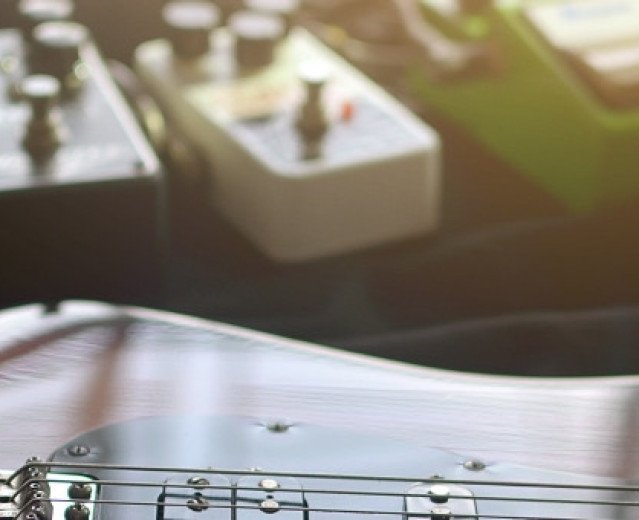To understand and to use the different kinds of compression pedals.
In
this article I am going to give a guidance to the
use of compression pedals
based on the type of circuit and the musical needs of guitar and bass
players
. Another article on the Soundsation blog
dials with historical hints and descriptions of common compressor types.
Why compressing?
In
the first article about compression we have seen that compression is the
automatic
level control operation
of an electric signal (guitar sound, recorded
track, and so on), setting its
dynamic range. In short, the sound levels
that exceed a certain threshold are reduced, whereas sound levels under it are
amplified.
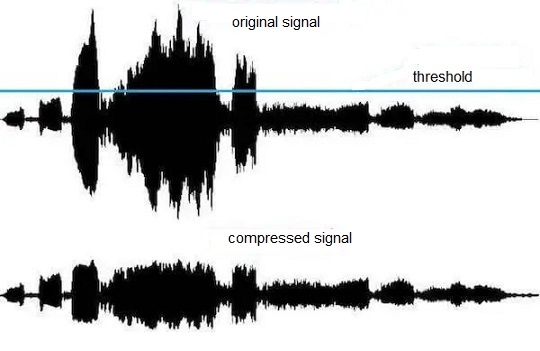
Requirements
for a
signal dynamic reduction can be adaptation inside a circuit, levelling
in audio production, automatic processing of the volume of a recording, peak
control
, including those peaks created by a guitar or bass player's
playing
, up to specific sounds of music styles as funk, fusion, disco and
country.
Compression
cuts threshold exceeding peaks and raises lower levels, levelling out the
output signal and producing a sustained sound (
sustain).
Compression
is very appreciated – though not always perceivable to everyone – when assigned
to
modulation and delay effects.
Compressor
and booster
Especially
among rock and fusion guitarists it is popular to use a compressor like a
booster, placing it between
the
guitar and an overdrive pedal
or the amp input in order to raise the signal level and take it more easily to distortion
without raising too much the general volume of the amp. At the same time,
the compressed and overdriven sound will be longer, warmer and more
controllable by the fingers, although it has to be pointed out that a distorted
sound is pretty much inherently compressed.
If
you want a boost effect only, it is possible to get it just raising the Volume
or Level knob, setting the Sustain or Compression one low or completely
counter-clockwise, though these two controls are pretty interactive. In fact,
the first one usually acts as the effect output level, whereas the second one
as the compression gain.
Some
compressors feature a
clean/clip option, that is a choice between a
clean full wave form and a squeezed one. Find an elemental example of clipping
in the schematic below
.
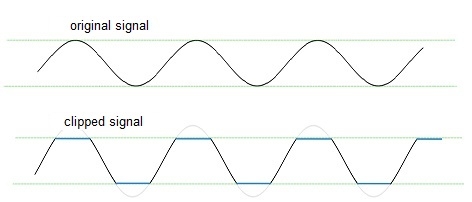
Other
models offer an integrated booster with different
effect routing options,
as it happens in the
Nux Masamune NBK-5.
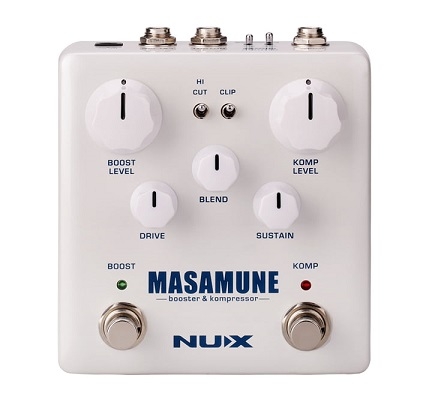
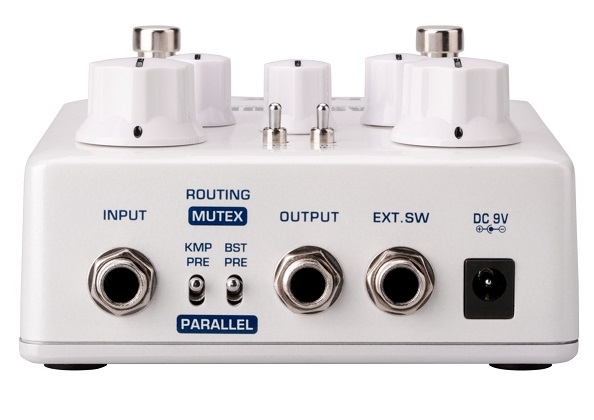
Compression
and noise
Especially
in outdated and cheap compressors, the hidden enemy is the risk to produce
noise
or, rather, to amplify the existing noise in our sound chain. As a matter of
fact the compressor “sees” the input signal inherent noise as a low level
signal to be raised, causing a very unpleasant effect during performance
pauses. For this reason compression circuits are often combined with a more or
less declared
noise gate section. Anyway, putting the compressor at the first
place in the effect chain
is recommended, thus avoiding it perceives possible
noises from other pedals, especially overdrive and distortion boxes.
Nevertheless, sometimes it is possible to see a compressor at the end of the
effect chain to level out the sound before amplification.
Which
compressor for which use
I
remind you that the
typology and the parameters of compression are
dealt with in the
first article
of the Soundsation blog. Let's see now the
most popular compressor types and some real models as references.
OTA
The most common compressor for guitar features an OTA circuit (current amplification), as it happens in the MXR Dyna Comp, in the Ross Compressor and in the following Ibanez CP-9, Boss CS-2 and DOD FX-80B, as well as in most of current ones with some twists: for example, MXR Dyna Comp Deluxe, Wampler Ego, Keeley Comp Plus, Electro-Harmonix Tone Corset, Fender The Bends, Maxon CP9 Pro, Nux Sculpture NCP-2 and Komp Core Deluxe.
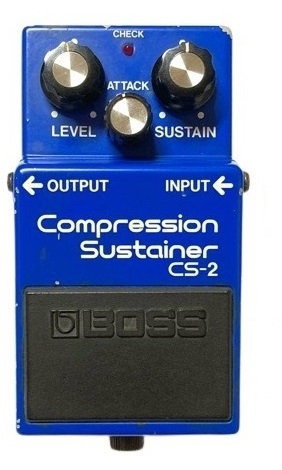
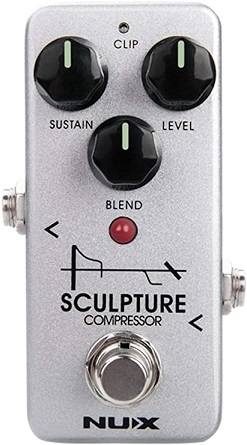
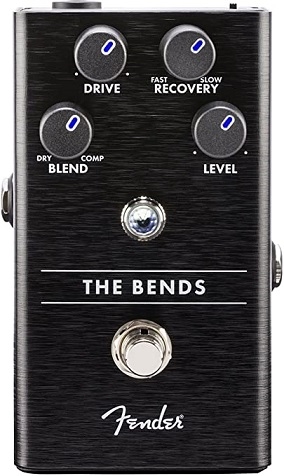
OTA
compressors can tend to “clip” and “squeeze” the sound adding a little of
“dirt” with some settings. They can be somewhat noisy – though an uncommon flaw
in today's quality products – or change the instrument original sound.
Obviously much depends on the product range and the circuit advancement.
Music
application fields are the most varied, from funk to disco, from country to
progressive, from pop to fusion, including certain clean or light
crunch
sounds of Texas blues (think about Stevie Ray Vaughan's Riviera
Paradise
). Bass players love OTAs too for traditional music genres and if a
killer attack is not needed.
VCA
Compressors
based on VCA circuits (voltage control) follow by popularity. A classic example
is the
Boss CS-3. VCAs are more precise and faster in reaction, with a
sharp attack when requested. Often they are are not so true to the original
input sound. They represent an effective and inexpensive solution in studio
rack-mounted compressors, though guitar pedals can result “cold” or “clinical”
for someone's taste. With their numerous parameters, they are very useful in
metal
music
for tight rhythm playing, legato, palm-muting, prog wet
arpeggios, in short when dynamic control, definite attack and a good “punch”
are requested.
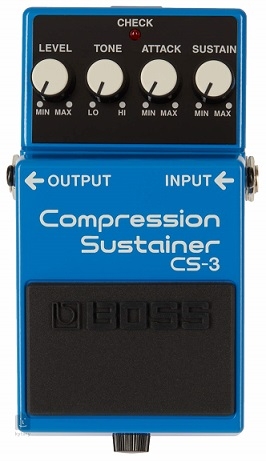
FET
VCA models with a FET stage (Electro-Harmonix Soul Preacher, Analogman Juicer) enhance VCA described features adding a stronger attack, emphasized transients, percussive sound and great push. Metal, funk and fusion bass players love FET compressors for their sound and dynamic qualities and for an often greater number of controls, as Attack and Decay. Instead, the old, simple and successful Dan Armstrong Orange Squeezer in our picture had no controls.
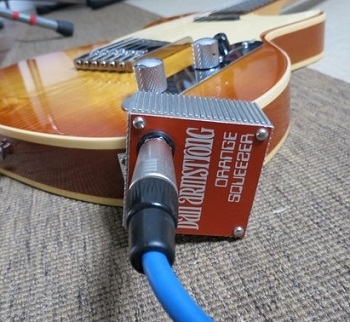
Optical
Optical
or opto-electronic compressors are based on a light source and photo-resistors
that modify the compression effect according to
variations of light
intensity
, for their part variable according to the input signal level.
These compressors have a pretty slow release, a soft attack and a warm sound.
Their kind of compression closely resembles a studio device one, so the effect
sometimes is little perceptible, intended for musicians with discerning taste
and fine playing. Anyway there are exceptions, preferably integrated with
boost
and EQ
circuits. In this case they perform very well in styles like
modern
rock fusion. Examples: Eleven Electrix Opt-Compressor, Diamond
Compressor, Demeter Compulator, Electro-Harmonix White Finger, BBE Opto-Stomp, Friedman
Sir-Compre.
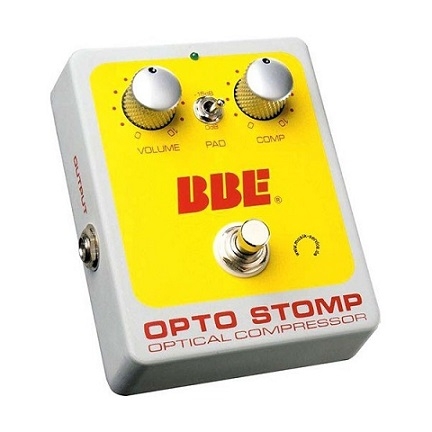
Tube
Tube
compressors use one or more tubes as the old studio forerunners. Sometimes the
tube is just used to “warm up” a solid state circuit sound. They feature a
refined and soft sound, a slow attack, a smooth decay and generally offer
few parameters. They need a
dedicated power supply, thus making them not
the preferred choice for
guitar players' pedal-boards. Models with a
good output, lots of controls and a DI out are recommendable for bass and
electric-acoustic guitar players. Some examples: Electro-Harmonix Black
Fingers, DV Mark Compressore, T-Rex Squeezer,
Effectrode PC-2A.
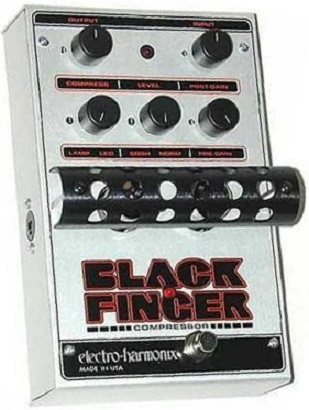
Digital
Over
the years, thanks to the technology experience made in
physical modelling
designs
, some digital compressors have appeared, though it seems they were
mostly unsuccessful. Exceptions are those models in whose marketing the word
digital
does not show too much, as well as those that can be used with download and
editing apps
. According to types, they can offer an original way of
compression; more often, they emulate well-known analogue compressors, as in
the case of the TC Electronic HyperGravity, the Source Audio Atlas and the Line
6 Constrictor. Other ones, as the Boss CP-1X, are
multi-band compressors,
meaning they process different portions of frequencies separately. In my opinion,
placing digital compressors in pedal-boards has more sense in a totally digital
domain or inserted in a loop.
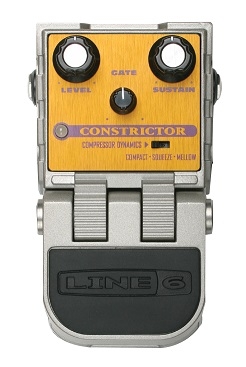
Conclusions
A
lot of guitar players snub the presence of a compressor in their pedalboard,
but this is an essential, indispensable effect in the post-production of studio
recordings for any great player, from
Jimmy Page to Steve Vai,
often used as an
out-board or mixer effect. Session
players and live pros always keep one in the reach.
It
has to be said that the compressor effect requires a certain
music and
performance maturity
to be appreciated by a musician. A good level of
awareness of the several aspects of the sound and touch on the instrument is
needed in order to include the right compressor in the right way among the
effects and create fine natural sounds.
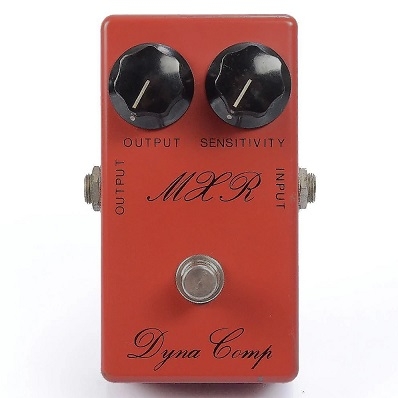
I
suggest to
novice guitarists to start with an OTA type compressor
if a classic smooth sound is desired. If you are searching for less noise,
cleaner sound and open highs, a model with the LM13700 op-amp is probably
advisable. I also exhort to compare OTA and VCA compressors, just to understand
their sounds before taking a direction.
Instead,
I would suggest a bass player to make the inverse choice: a good VCA to start
and then a comparison with an OTA or another kind.
I
would suggest an optical compressor to the musician who is searching for
balance and finesse in the harmonic texture of his arpeggios and phrasing;
but a high class VCA can also work.
I
would like to invite mature musicians who have not adopted a compressor yet, to
take advantage of this little technical and stylistic guide.
If
you have diversified needs and a good touch, try also compressors with more
features, including
equalisation and boosting. In this regard, I
absolutely have to refer to the
Masamune NBK-5 and similar ones to
point out the different behaviour of the boost and the compression sections
when they are connected in series or in parallel, an option this Nux effect
offers: a whole world of dynamic and sound possibilities will spread under your
fingers. Experience to believe!
Fabrizio Dadò
